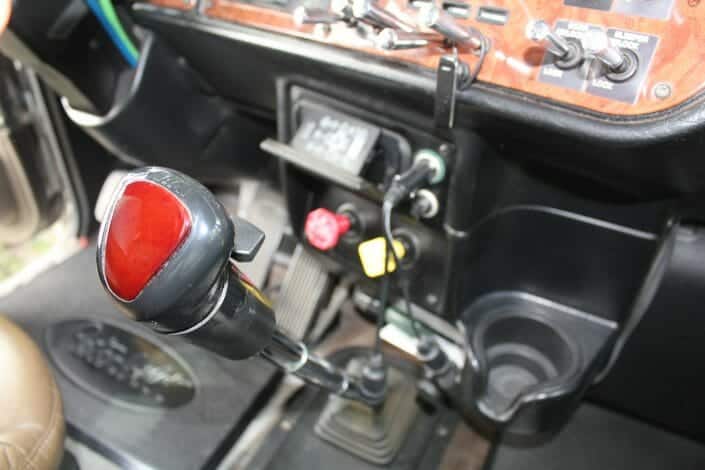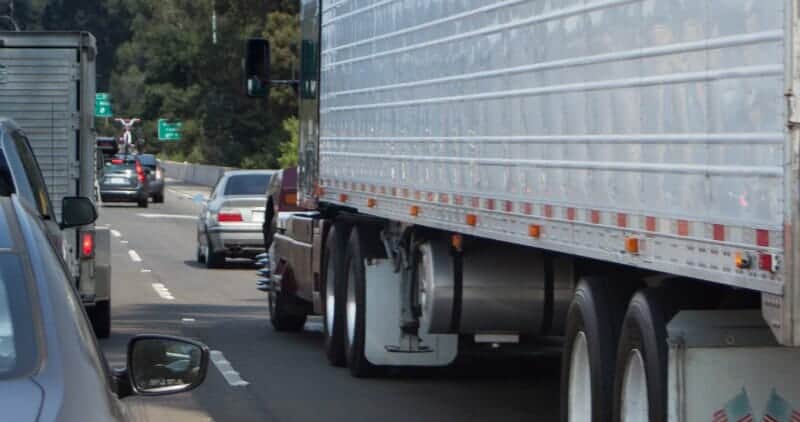If you wish to become a truck driver, there are some things you need to know about the process.
It’s important to start your new career on the right foot.
So here’s the good news. The steps you’ll need to take to get a CDL are pretty straightforward.
Getting the ‘early steps’ right is critical.
If you don’t get some things right, like picking the wrong driver training school, it could delay or even jeopardize getting your truck driving license.
Here, we’ll give you all the steps to get a Class A CDL, from start to finish, so you can get behind the wheel of a truck, to pursue that career you’re after!
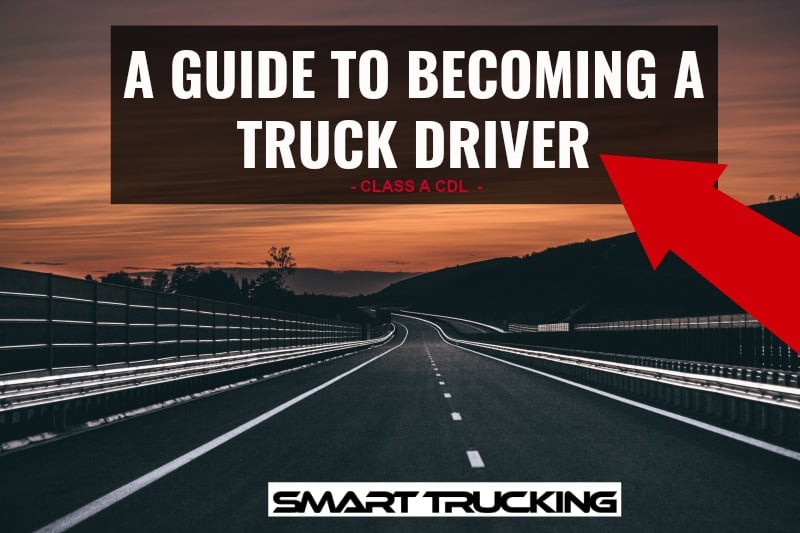
How To Become a Truck Driver in the U.S.
Getting Your CDL – The 10 Steps
Before jumping in it’s important to note that individual states are responsible for issuing CDL’s, not the federal government.
In most states students are required to attend and graduate from a legitimate truck driving school.
In others, they’re able to get their CDL on their own as long as they’re eligible and pass the necessary tests.
We’ve already established that you’re determined to shoot for the stars and get your Class A CDL, let’s take a closer look at each step.
5 Things You’ll Need To Become a Truck Driver (In a Nutshell)
- You’ll need to possess a license to drive a car
- Write and successfully pass the FMCSA exam, plus medical tests
- Write and pass a test to obtain the CDL Learners’ Permit ( needed for initial training )
- Do the CDL exam and obtain your truck driving license
- Get driving experience when you have your CDL, in order to secure a job
Other than having a driver’s license for a car, the training school you choose will provide the means to complete all of the above.
1. Determine Your Eligibility
If you’re between the ages of 18 and 21 you can get a CDL.
You can also operate a commercial vehicle outside of your home state as of your 21st birthday.
You’ll also need a physical and DOT medical card from an examiner listed on the Federal Motor Carrier Safety Administration’s (FMCSR) national registry.
You can find qualified examiners here.
Each prospective commercial driver must also provide the following documentation to prove his or her identity, state of residency, Social Security number, and driver’s history:
- birth certificate
- driver’s license
- Social Security card
- utility bill
- copy of MVR
If you’ll be attending an out of state truck driving school, you’ll need to ask your recruiter if there are any residency requirements for students in that state.
2. Address Issues That Could Prevent You From Getting Your CDL
Even if you meet the above eligibility requirements however, there are a number of items that could possibly derail your plans of getting your CDL.
They include:
- certain prescription medications
- medical conditions like sleep apnea, high blood pressure and diabetes
- physical handicaps like missing fingers, toes, or limbs
- serious criminal offenses like drunk driving charges
- felony convictions for arson, kidnapping, and extortion
For those with the aforementioned medical conditions and physical disabilities, it may be possible to obtain a written waiver from a physician stating that your conditions won’t prevent you from operating a commercial vehicle safely.
Even for those with checkered pasts, a felony conviction may not be the end of the road.
Drug tests aren’t part of the process of getting a CDL. But they are required when applying for a job as a commercial driver.
Once you’re hired you’ll be subject to random drug testing . If you are involved in an accident, it is mandatory you are drug tested as well.
Many carriers also frequently test drivers who’ve just come back on-duty from vacation or short breaks at home, so casual drug use almost always catches up with you.
Many new drivers take the ‘it won’t happen to me’ approach when it comes to drug testing.
It’s dumb to invest thousands of dollars and months of your time in getting a CDL, to throw it all away for a little casual (and illegal) recreation.
Nancy Reagan had it right all those years ago.
When it comes to drugs, JUST SAY NO.
3. Enroll in a Quality Truck Driving School
Truck driving schools come in all shapes and sizes.
They range from:
- private training academies and community college programs with dedicated instructors and excellent courses
- to giant CDL driver mills run by mega carriers, many of which churn out minimally qualified steering wheel holders by the truckload.
So choosing a reputable school is important.
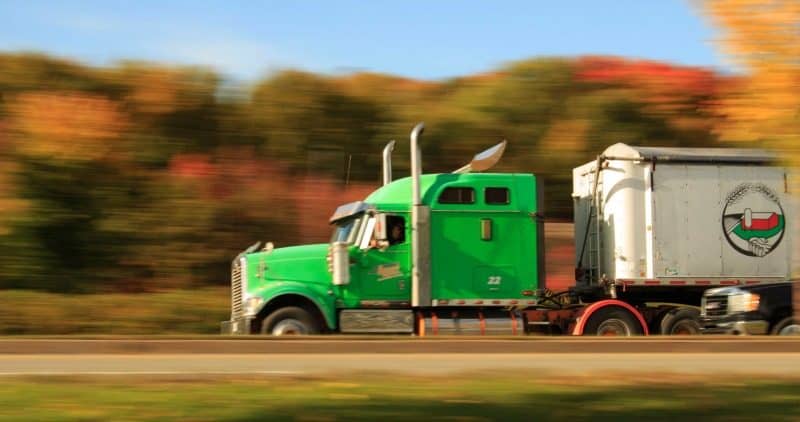
4. Get a Copy of the CDL Manual (For your state)
Though they’re pretty standardized these days, CDL study manuals do vary slightly from state to state. Get a manual from the state where you’ll do your training and testing.
You can pick-up a hard copy at the DMV or download a PDF to your computer.
If you do the latter, you may want to print a copy to make studying easier.
If you’ll be attending an out of state school, they may be able to email you a link to the manual they use during training.
5. Complete a CDL Learner’s Permit Application
Students may complete a learner’s permit application online, in-person, or at the truck driving school they’re attending.
In addition to the aforementioned documents, students will also need:
- copy of MVR including complete driving history from all 50 states and Washington DC
- home address
- current driver’s license and information on licenses you’ve had from other states
- alternate proof of identification like a passport, credit card or Social Security card
Students may need to pay the application fee individually if it hasn’t already been included in the cost of tuition.
If possible, it’s always a good idea to fill out your application while at driving school.
They’ll likely have staff familiar with the process, and they can help you with any items you’re missing or are unsure of.
6. Take the CDL General Knowledge Test
After applying and paying for your learner’s permit, you’ll need to pass a general knowledge test.
If you’ve dedicated enough time to studying, you shouldn’t have any problems.
7. Learn, Practice and Study
FMCSR rules state that during their training, students must practice driving with a qualified CDL holder instructing them from the passenger seat.
Private and company sponsored driver training programs are staffed with instructors. But if you’re in a state that doesn’t require formal schooling you’ll need to find a qualified teacher on your own.
Though actual driving time is definitely more exciting, in-classroom learning is just as important.
The classroom portion of training typically lasts about 300 hours in addition to onsite driving and maneuvering practice and that conducted on public roads.
8. Take the Final CDL Tests
To get your CDL and join the ranks of commercial drivers you’ll need to take what you’ve learned on the road and in the classroom and pass these final tests:
- A Vehicle Inspection (Pre-trip Inspection) Test—includes checking things like the engine compartment, tires, suspension, braking system and coupling devices on combination units
- A Basic Controls Test—includes straight line and offset backing, parallel parking, and alley docking
- A Road Test—a driving instructor will evaluate the student’s awareness, overall command of the vehicle, use of mirrors and turn signals, and ability to brake and accelerate normally
- Endorsements – There are some endorsements you can get as well, to increase your opportunities in the trucking industry. (HazMat, Twic Card to name a few)
Remember, you’ll need to have your learner’s permit for at least two weeks before you’ll be permitted to take the final tests.
If you’re attending a school, they’ll schedule the necessary appointments and make sure you have access to the correct vehicle for the class of license you’re getting.
If you’re going for your Class A CDL, you must take the test in a combination vehicle—not a dump truck or a school bus.
For those who are getting your CDL on their own, you’ll need to take care of both of these steps.
Some states may provide test vehicles, so ask before scheduling your appointments.
9. Get Your CDL (And What To Do If You Don’t Pass On the 1st Try)
After passing your final CDL tests with flying colors, you’ll be issued a physical copy of your new license.
If anxiety, pre-test jitters, or a lack of studying kept you from passing, you’ll be able to retake the tests again after a short waiting period.
Be sure to ask about your school’s retesting policy in regard to fees and waiting times between retests.
Some offer unlimited free tries until you pass, others may have additional charges for each attempt after the first test.
10. Getting a Truck Driving Job
Once you have your CDL, you need a job!
If you are in a paid CDL training program, you will have an automatic job placement as a truck driver.
If you have completed the program successfully at a private truck driver training school, the school may have a placement program, with some select trucking companies.
Otherwise, you’ll need to start your job search, if you haven’t already.
There are trucking companies who will train those who possess a CDL, in one of their finishing and training programs. Typically these programs last from about 2-4 weeks, maybe longer. These are great introductory training programs at your new carrier. They will teach you things you probably didn’t learn in your formal school training.
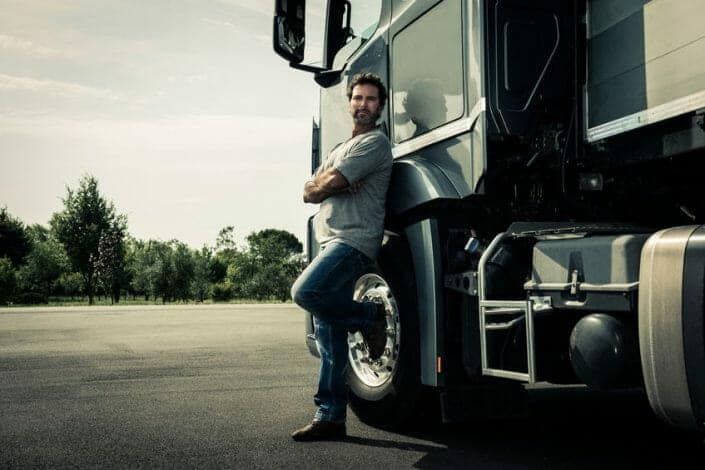
Your Truck Driver Training Options – A Decision To Be Taken Seriously
There are actually 4 ways to become a truck driver and get your CDL.
It really DEPENDS on you as an individual, which of the options will work best for you.
Once you’ve decided which of the training options you are going after:
- Contact the school or program of your choice.
- Ask tons and tons of questions
- Arrange for a tour of the school, to see the facilities and get a feel for the integrity of the school.
- Take home any information they supply you with and review it carefully before choosing a school. The future of your driving career depends heavily on making a good choice of schools.
Compare your findings on the various schools and programs, to pick the best CDL school to suit your needs. Your future professional truck driving career depends on it.
The Importance of Choosing The Right CDL School
I cannot stress enough the importance of choosing the right CDL school.
In order to get your truck driving career started off on the right foot, it’s critical that you choose the right type of CDL training that suits YOU.
- You can be a truck driver in as little as a few weeks time or the training program can take up to a year, depending on the training program you choose. But, you may not have the time to spare so getting your CDL asap may be in order.
- Maybe you don’t have the extra money kicking around to invest in costly tuition for a training school, nor do you qualify for any financial aid.
- Maybe the location of the school is an important factor for you for personal reasons.
- Or perhaps you need an income sooner rather than later and you need that CDL in your hands like NOW.
So here’s the deal.
It’s critical to pick the right training program to suit YOU and your needs.
You need to know:
- How much time you want to spend in a training school.
- How much money you have to spend on training.
- Where you wish to attend training.
- How quickly you wish to get behind the wheel as a qualified CDL driver
THEN, you’ll need to choose one of the types of training available.
Look at these 3 basic training types and decide which will suit YOUR needs.
1. Private CDL Schools
There are tuition costs which are different from school to school.
Count on at least a few thousand dollars. Usually the tuition fees are paid up front for this type of professional driver training. If you have the funds to pay for your truck driver training, then this type of program may be attractive to you.
Programs are typically anywhere from a few weeks to a few months, again depending on the individual schools.
There are programs available which provide financial support for school costs.
There are a multitude of private CDL driver training schools to choose from in most areas of the US.
A student can enrol in a program at almost any time, to complete a program, so the waiting time to get into a program should be minimal. You should be able to have a CDL in your hand in a relatively short period of time, if this is important to you.
Most reputable schools have a driving job placement program with truck companies, where the trucking company will offer you a job upon completion of your CDL at the end of the training session.
Note: Not all schools do this. Also sometimes the carriers the school is affiliated with are not reputable companies, where you would wish to work.
Tip: Look for a school that is accredited for CDL training to be sure they are offering a credible, quality course.
If you need to find a driving job after getting your license, you can find some ways to do just that: How to Land Truck Driving Jobs With No Experience.
2. Paid CDL Training + a Job
These programs are also commonly called:
- Company Sponsored CDL Training
- Free CDL Truck Driver Training
- Company Sponsored CDL Training Schools
A company sponsored CDL training school program is a popular choice by drivers who do not wish to shell out money for their training.
It is for this reason this type of truck driver training is particularly attractive to those wishing to become a truck driver.
There will be some costs for the student in this type of training, but the costs will be very minimal.
Theses programs are offered by large trucking companies which will train students to obtain their CDL in exchange for a commitment to remain employed as a truck driver with the company for a period of time, usually about a one year period.
If the contract is broken by the trainee, they will be obligated to pay back the company for the training costs.
Wages are typically low during the first year of employment. So the free CDL training or low costs to the student, are more than made up for by the trucking company in that first year of employment.
Training for this type of program is offered frequently and is ongoing.
Programs are typically short, a few weeks or so in length. A student can obtain a CDL in a relatively short period of time, but then is under contractual agreement for the next year or so with that company.
The greatest advantage to company training is the fact that the trucking company will give the student a truck driving job at the end of the CDL training. This is an important factor as many carriers will not hire a truck driver without any job experience.
These programs are offered in many areas of the U.S. Many of the training centers offer special accommodations for out of town students.
But keep in mind, as a student, you may be responsible for the cost of your transportation to and from the program (depending on the program).
The following are just some of the company sponsored CDL schools where you can find more complete information to their programs.
3. Community College CDL Training
There are tuition fees for these programs, however Community college CDL training programs are another option where various funding programs are available to prospective students.
These programs can also include some educational upgrading as well which can be very beneficial.
Programs typically start only a few times a year, so it may be awhile before the next program commences.
Often the training is scheduled at a much slower pace than most private CDL schools.
This can be an advantage to those students who are only able to attend on a part time basis or in the evening, as they are already holding a full time job.
It could be awhile before a student actually graduates with their CDL. If you aren’t in a big rush to get your CDL, a community college program can be a good choice.
4. Getting Your CDL On Your Own
It is possible in some states to get your CDL without attending a formal CDL training program.
However, there are motions in the U.S. to completely eliminate this method.
Check with your state for current rulings.

Private CDL Schools vs Paid CDL Training. Which Is Better?
Choosing a reputable driver training school may be the biggest choice of your new driving career.
If you’re near a private CDL school or community college that offers CDL training and would rather not spend months away from your family living in a cheap hotel with another student (and possibly bed bugs!), they may be the best bet (if you can afford it.)
They also typically have the best programs and teachers.
There are lots of high quality private schools out there as well, but some have less than stellar reputations.
Some company sponsored CDL schools have horrible reputations for churning out unqualified drivers.
Some of them require students to work for them for very low pay for a year or more after graduating in order to pay for their tuition.
So the key is to DO YOUR RESEARCH ON THESE TRAINING PROGRAMS!
Important Things To Consider When Choosing A CDL School
- Are they local or out of state?
- If out of state, are lodging, food, and transportation included?
- do they offer financing or other payment options?
- If they’re a paid CDL training school, will you be required to drive for them after graduation?
- If so and you complete your mandatory employment period, will tuition be waived?
- Are the learner’s permit application and license fees included in tuition, or will you need to pay for them separately?
Don’t just pick the school with the coolest website and the shiniest trucks.
Take your time and research each school thoroughly.
Why Become a Truck Driver?
In short, a trucking career can be a lucrative career, if you make carefully thought out decisions.
Professional driver pay ranges depending on the type of truck driving job you work at as where you are working.
Typically, some states pay more on average than others.
There are plenty of truck driving jobs all over the U.S. There is a serious truck driver shortage in the U.S., which continues to grow. So no need to be concerned over lack of work if you’ve decided to become a truck driver.
You should not have any issues getting a truck driving job. The secret is get good training, practice your skills and look carefully for the right driving job with a reputable company.
Why Get a CDL License?
Driving can be a rewarding career that offers abundant, recession-proof job opportunities and the ability to see parts of the country that most only dream of.
Qualified drivers are usually in short supply too, which means stability and advancement possibilities for safe, experienced truckers.
On the other hand, trucking can be lonely, stressful and hard on families.
But despite the downsides, attending truck driving school can be a great investment in your future.
How Can I Pay For My CDL Training?
If you attend one of the company sponsored training schools, most if not all of your costs are covered (although the obligations are plentiful!).
Here are some of the options available to you, to pay for your truck driver training: 10 Ways to Pay For Your CDL Training.
F.A.Q. – How To Become a Truck Driver
For those who are determined to become a truck driver, yes it is worth it. There are many perks to a truck driving career. There is currently a truck driver shortage in North America. Predictions are this will continue for many years to come, so truck driving jobs are plentiful. It is possible to live most anywhere in North America, and still be able to utilize your CDL to get a job as a truck driver. Pay has been improving recently, which also makes a driving job more appealing.
The Class A CDL rather than the other classes of licenses is the top choice as it allows the holder greater choice of jobs and more flexibility.
The greatest time commitment when getting a CDL is the training. The training lasts anywhere from a few weeks to several months, depending on whether the trainee has chosen a company sponsored school (a few weeks), a private CDL school (few weeks-6 weeks approximately) or a Community College training program (could be several months). Each program is different.




